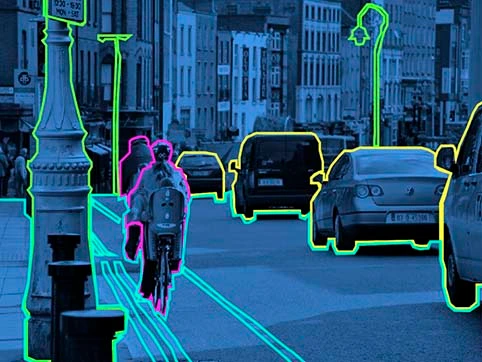Best Practices for Effective Image Annotation

Image annotation is critical in developing machine learning models and computer vision applications. It involves labeling images with relevant metadata, such as object boundaries, semantic segmentation, and other identifying features, to enable machines to recognize and classify objects within images. Effective image annotation is essential for creating accurate and efficient machine-learning models and computer vision applications.
Various best practices can help ensure effective image annotation. Clear annotation guidelines must be defined before the process begins to ensure consistency and reduce errors. Choosing the right annotation tool that suits the specific task is also essential to improving efficiency and accuracy.
Using multiple annotators, providing adequate training, and performing regular quality checks can also help improve the accuracy and consistency of the image annotation services. Finally, incorporating active learning techniques can help reduce manual annotation required, leading to more efficient annotation processes.
By following these best practices, organizations can develop highly accurate machine learning models and computer vision applications, improving performance and enhancing the user experience.
Table of Contents
Best Practices for Effective Image Annotation
- Define clear annotation guidelines: Annotation guidelines should be created before beginning the annotation process. These guidelines should specify what types of data entry services and image annotation services are required, how to annotate different types of objects, what terminology to use, and other relevant details. Clear guidelines help to ensure consistency and accuracy in the annotation process.
- Choose the right annotation tool: There are various annotation tools available, each with different features and capabilities. Depending on the type of annotations required, different tools may be more suitable. For example, if the task is to annotate the location of objects in images, bounding box annotation may be the most appropriate tool. On the other hand, if the task is to annotate individual pixels, semantic segmentation may be required. Choosing the right tool can improve efficiency and accuracy in the annotation process.
- Use multiple annotators: Using multiple annotators can help to reduce errors and increase consistency in the annotation process. Each annotator can annotate the same image independently, and any discrepancies can be reconciled. Multiple annotators also help to reduce bias, as different annotators may have different interpretations of the same image.
- Provide adequate training: Annotators should be trained on the annotation guidelines and the annotation tool before beginning the annotation process. Adequate training helps to reduce errors and ensure consistency in the annotation process.
- Check the quality of annotations: Quality checks should be performed regularly to ensure that annotations are accurate, complete, and consistent. These quality checks can be performed manually or using automated tools. Any errors or discrepancies should be corrected promptly.
- Use active learning: Active learning can help to reduce the amount of manual annotation required. Algorithms can be used to identify the most informative images to annotate, reducing the time and effort required for annotation. Active learning can also help to improve the accuracy of machine learning models by prioritizing the annotation of images that are most difficult to classify.
Conclusion
In conclusion, effective image annotation plays a crucial role in the development of machine learning models and computer vision applications. The best practices discussed in this article can help organizations achieve accurate and consistent annotation, resulting in improved performance and user experience. Clear annotation guidelines, the use of appropriate annotation tools, multiple annotators, adequate training, regular quality checks, and active learning techniques are all vital to ensuring effective image annotation.
It is also essential to remember that effective image annotation requires attention to detail and careful planning. Organizations should take the time to evaluate their needs and choose the best approach that works for them. By following these best practices, organizations can unlock the full potential of machine learning models and computer vision applications, improving efficiency, and enhancing the overall user experience.






